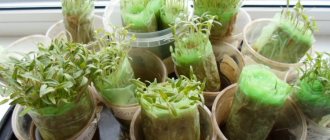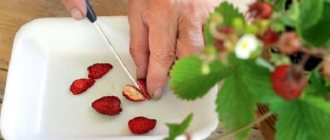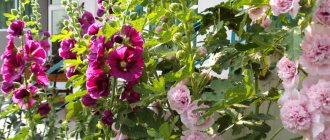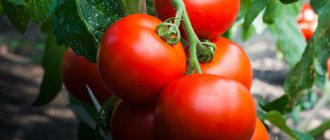In the garden, you can often find a beautiful representative of the mallow family - the rose stem (Alcea).
The genus includes about 80 species . It is actively used in landscape design and as a bright backdrop for multi-level flower beds.
Among the variety of rose stems, there are perennial, biennial and annual forms.
General information
Among the alts you can find real giants, whose size can exceed 2 m, but thanks to the work of breeders, short forms with a height of about 0.3 m have also been obtained.
The variety of colors and shapes of the corollas themselves is amazing. Terry varieties of roses are highly because their decorative qualities are incredibly high.
They love alcea for its unpretentiousness, high resistance to diseases and pests and spectacular flowering , which can last from the end of June to September.
Interesting! The size of the flower cup of the stock rose is very large. So, on some varieties, a fully opened flower can reach 20 cm, but usually they are still a little smaller.
The stem of the rose stem is straight, clearly oriented vertically, although sometimes the top of the flower can bend under the weight of the buds. The leaf blades are large, dense, with slight pubescence, and have a distinct heart shape.
The root system of the plant is quite developed and has a rod shape, so the flower usually has no problems extracting moisture from the soil.
Under natural conditions, alcea is distributed in the Mediterranean region . It came to Europe from Palestine back in the 16th century.
Mallow came to our gardens from China, where it has been cultivated as a garden and medicinal plant for centuries .
Spring sowing in open ground
In spring, it is also permissible to sow seeds directly into open ground. The algorithm of actions here is the same as in the fall. Sowing is carried out around the end of May, when the risk of return frosts has passed. The day before, the seeds are soaked in a solution of phytohormones. This manipulation promotes the rapid awakening of dormant embryos, activates the development of the root system, and increases immunity to adverse factors. Zircon, Atlet, Ecosil, and Prorostok have proven themselves well in this regard. After two true leaves appear, repeated treatment will be useful to speed up development.
When sown in spring, plants bloom only the following season.
It often happens that not all of the sown seeds germinate. Therefore, many gardeners sow them with a reserve, which is why the opposite situation arises - the plantings are thickened. If too many seedlings emerge, they grow chaotically, interfering with each other; weaker plants should be removed. Then the mallow grows on its own, without outside help. In the case of spring sowing, the leaves develop in the first year, forming a round, low rosette. And only the next season the hollyhock will have a stem with flowers. The hardy hollyhock can overwinter well without shelter. If the variety is delicate or a snowless winter is predicted, the planting site can be covered with mulch.
Variety selection
To make the flower bed pleasing to the eye and the plants to look harmonious, it is worth choosing a variety suitable for cultivation.
Tall varieties
Their height can reach 2-2.5 m, they look great in the background as a bright backdrop for low-growing plants. They are used to decorate gazebos, house walls and fences.
Mini rose stock
Miniature alceae can become the centerpiece of any flower bed. Their low stems, 0.3 to 1 m high, will look great framed by low crops.
Potted mallow
It is curious that exotic lovers cultivate anisodontea, or perennial “African mallow,” indoors.
A beautifully flowering subshrub of the Malvaceae family has branched, erect stems and can bloom from May to autumn
Plants growing in large tubs are formed into compact, neat bushes or low bonsai-type trunks.
Growing from seeds at home
of gradually planting rose stems in open ground is becoming increasingly popular . The fact is that seeds sown immediately into the ground often do not sprout.
Maybe it’s a matter of unsuitable soil or too early/late sowing, but the fact remains a fact. It is because of this reason that gardeners prefer to germinate seeds at home , obtaining valuable specimens of rose stems through seedlings.
Pre-sowing preparation of material
It is recommended to soak purchased seeds immediately before planting in a container of warm water for about 12 hours. This will allow the seeds to swell, absorb moisture, and germinate faster after sowing.
from garden plants depending on the flowering period of the plant . Seed collection can be done from the end of July to the end of September. Self-collected seeds also require soaking before planting.
Interesting! Rose stock seeds have a fairly long shelf life and can sprout even 3 years after the time of collection.
Soil preparation: composition and subtleties
In order for the plant not only to hatch, but also to begin to develop successfully, good soil is required. Although alcea is undemanding to the composition of the soil, it is still better to take a high-quality nutrient substrate .
Substrates intended for growing mallows have proven themselves to be excellent, but ordinary universal soil will cope with the task of feeding seedlings.
If you want to make the soil yourself, you can mix equal parts garden soil, peat and humus .
Do not forget to disinfect any soil (purchased and compounded) before planting seeds. This simple procedure will avoid many problems associated with the activity of pests and pathogens.
How to choose a container for seedlings
Due to the structural features of the root system (it is taprooted), the rose stem does not respond well to picking .
Very often, during picking, the tip of the root is damaged, and this weakens the sprout and slows down its development. Therefore, it is better to refuse sowing in a common container.
To plant seeds, you can take both plastic and peat pots : they do their job perfectly.
Attention! If you choose plastic containers, make sure that there are drainage holes in the bottom. Stagnant moisture is incredibly harmful to young rose stems.
When to sow
Sowing can be done, depending on the region, from February to April . The earlier the seeds were sown, the earlier the flowers need to be planted in the ground.
We care for the seedlings
Mallow seedlings do not require special care, but this does not mean that they can be abandoned.
The main stages for seedlings will be:
- Organization of planting lighting . The rose stem is very light-loving, so the seedlings are placed on a well-lit windowsill, and in the evening additional lighting is necessary with the help of phytolamps.
- Timely watering . You need to water regularly, not allowing the earthen ball to dry out, but you also don’t need to fill the pot.
- Application of fertilizers . To stimulate the development of green mass, seedlings at the third leaf stage are fed with nitrogen fertilizers.
Description of the plant
Gardeners love the hollyhock for its beauty and unpretentiousness, which is why it can often be seen in their garden plots. In addition to mallow, it has several other names: mallow and kalachik.
This plant is a member of the Malvaceae family . More than 70 species are cultivated in Asia, Europe, North America and the northern part of the African continent. It was with these varieties of stock roses that breeders worked at one time. Through crossing, many varieties and hybrid forms of this flower were obtained.
Mallow is a herbaceous plant with a straight, ascending or recumbent stem. At the beginning of growth, it becomes pubescent and then becomes naked. An adult plant reaches 30-250 centimeters in height. Depending on the variety and type, it can be annual or perennial.
Mallow has petioled leaves with a slight pubescence, incised or having 5-7 lobes, rounded heart-shaped.
Inflorescences are located in the axils of the leaves, 1-5 pieces each. They consist of five petals and a calyx, which is divided into 5 parts. Their petals are deeply notched, inverted, oblong-ovate or triangular with wavy edges. The diameter of the flowers varies from 5 to 15 centimeters. There are varieties with semi-double, double and regular inflorescences.
The following colors are typical for stock roses::
- white;
- red;
- crimson;
- pink;
- lilac;
- yellow;
- purple;
- lilac;
- violet.
The inflorescences may be spike-shaped or racemose , depending on the species. In place of each flower, fruits with seeds are formed. The root system is branched and long.
Planting and care photo
When the seedlings have fully grown and produced 3-5 leaves, it’s time to plant them in a permanent place.
When to plant in open ground
You can transplant seedlings into the ground when the soil has already warmed up sufficiently and night temperatures do not fall below 5...7 ºС, that is, at the end of May.
Choosing a suitable location
In order for a flower to develop well and delight with abundant bright blooms, it needs to choose a suitable place in the garden. Try to plant alceas in areas where their tall stems will be protected from gusts of wind that can break the plants .
But do not choose shaded areas. With a lack of sunlight, the flower fades and produces more modest blooms.
Transfer to a permanent location
Before planting the rose stem, dig up the flower bed. If the soil is loose and well fertilized, no further action needs to be taken. In poor and heavy soils it is worth adding sand or peat mixed with humus.
Planting is carried out using the transshipment method so as not to damage the root . In the prepared flower bed, dig holes at a distance of at least 30 cm from each other.
The earth around the flowers is compacted a little and mulched generously.
Choosing a place to plant stockrose
Although stockroses are unpretentious flowers, there are several conditions that must be met in order for the flowering to be abundant and long, and the flowers to be bright and large:
- the place where it is planned to plant stockrose should be sunny (light partial shade is allowed), protected from drafts;
- the plant does not tolerate waterlogged soils and proximity to groundwater. This leads to rotting of the roots and death of the plant;
- Stockrose should not be planted in heavy clay soil. The best option is fertile, light, well-drained soil with the addition of sand;
- You need to take precautions when feeding. Oversaturation with fertilizers leads to rapid growth, large leaves, but weak flowering.
Flowerbed care
Alcea does not require specific care, but the plants need to be monitored to maintain their spectacular flowering.
Watering
Water flowers in the morning or evening , when the scorching rays of the sun cannot burn delicate flowers if they get wet.
There is no need to water too often, since stagnant moisture harms the root system, but you also shouldn’t let the soil around the stem dry out.
Therefore, water according to the weather: in hot weather 2-3 times a week , with regular precipitation no more than once a week.
Fertilizer and feeding
You can feed the rose stem with potassium-phosphorus fertilizers at the time of transplanting into open ground to stimulate the ovaries.
Removing faded inflorescences
Since the flower does not need shaping or pruning, only sanitary pruning is carried out . They are needed to maintain the decorative appearance of the plant and prevent the development of fungal infections.
Sanitary pruning involves the timely removal of faded buds and dried/damaged leaves.
Care in autumn, wintering
Perennial and biennial plants are left to overwinter in the ground , but the stem is cut off close to the surface of the ground, and the soil is generously mulched with straw or spruce branches.
Collecting seeds
After the flowers fade, seed pods filled with seeds appear in their place. They can be collected from August to September and stored until the next planting period .
Transfer
It should be noted that an adult plant reacts very poorly to transplantation and practically does not take root in a new place , while young annual plants tolerate the procedure well.
Propagation and collection of seeds
Mallow is propagated in two ways: cuttings and seeds.
Cuttings help to guarantee the preservation of the qualities of the mother plant, which is impossible with the seed method of propagating hybrids. In this case, the doubleness of flowers is especially often lost.
- Cuttings are obtained by cutting the stem into pieces 10-12 cm long. The work must be done with a sterile instrument, and the sections themselves are treated with an antifungal drug.
- The cuttings are rooted in a greenhouse, ventilating the plantings daily. The soil is moistened with small portions of water, avoiding waterlogging. The appearance of new shoots will indicate successful rooting.
Seeds are harvested when at least part of the seed pods turns brown.
- The peduncle is cut off and placed indoors for storage so that the remaining boxes also ripen.
- You can collect seed material gradually, cutting off only darkened and yellow boxes from the stems. Collect seeds from the strongest and healthiest plants.
After full ripening, the boxes begin to open. The collected seeds are dried (but not in the sun) and stored at room temperature in paper envelopes or fabric bags. When properly stored, mallow seed material remains viable for up to 3 years.
On a note! If several varieties of hollyhocks grow on a site at once, they can easily cross-pollinate with each other. To ensure that the varietal properties are preserved, propagate mallow from cuttings.
Diseases and pests
Alcea is practically defenseless against fungal diseases. The main reasons for the development of the disease are low temperature and excessive soil moisture .
The most common disease that affects rose stems is rust . Signs of the development of the disease will be red spots on the leaves. After some time, the leaf plates dry out and curl.
Drugs such as Topaz or Bordeaux mixture will help in the fight against the disease.
Pests
Of the insects , alcea is parasitized by aphids and spider mites . If insects are detected, plants must be treated with insecticides.
Types of rose stem
There are many types of this plant. The most common are the following:
- Forest mallow used to be popular, but today it has been replaced by the perennial crop “Sudanese” (hibiscus). This rose stock is grown in the middle zone. It is considered an annual, but can actually live for 2 years. Growing from seeds is carried out in summer cottages. The maximum height of hibiscus is 120 cm. The flower has a dark color.
- “Black Mother of Pearl” is also grown from seeds. This species is distinguished by purple flowers with dark veins. Perennial mallow is a low plant, maximum height is 1 m. Stem rose may have soft purple or pinkish petals. The average flower size is 5 cm. This type of mallow is in demand, it is very resistant to cold weather. The flower is grown in areas with different climates.
- Mallow rugose is one of the most popular varieties. Its height reaches 2 m. The approximate diameter of the flower is 3 cm. This species is a perennial. On average, it grows 90 cm. The flowers of wrinkled mallow are double, somewhat reminiscent of peonies.
- Hybrid mallow is a perennial plant and has a varying number of stems. The peculiarity of the flower is that it can reach 2 m in length. Flowering begins in early summer and ends in mid-autumn.
Application
In addition to garden design, roses are used in cosmetology.
In the landscape
Thanks to its slender stems, densely covered with spectacular flowers, the stock rose is actively used to decorate arbors, arches, garden groups, fences and as a background for multi-tiered flower beds.
Seed preparation
So what do you need to know about this? To improve germination, it is necessary to pay attention to the quality of the seed. Two-year-old seeds are best suited for planting. Before germination, you should check the quality of the planting material. To do this, the seeds are poured with warm water for half a day. They will be saturated with moisture and germinate faster.
The use of stockrose in landscape design
- As a flower bed plant, stockrose decorates the flower garden from July to September. Tall and densely blooming, in regular garden beds it can be used as a focal plant surrounded by medium-sized background (20 to 40 cm in height) and framing (up to 20 cm in height) flowers. For a regular flower bed, it is desirable that the plants bloom at the same time.
- Stockrose is used as a plant to camouflage outbuildings or plantings.
- Suitable for decorating long narrow beds, ridges located along the fence or decorating paths.
- Stockrose is used for summer flower beds.
How to care for seedlings?
Let's look at this in more detail. Caring for the stock rose comes down to regular watering, ventilation and hardening. The film should be removed after the first shoots appear. It is not recommended to remove it immediately. First, the film is removed for 10 minutes a day, then for a longer period of time, and so on until it is completely removed.
If the seedlings become too elongated or pale, they need to be provided with additional lighting with a phytolamp. When 3 leaves appear on the sprout, it is worth performing the hardening procedure. To do this, pots of seedlings must be placed on the veranda or balcony. It is not recommended to pick rose hollyhocks. If this procedure cannot be avoided, the plant must be replanted along with a lump of earth.











